#john f seitz
Photo
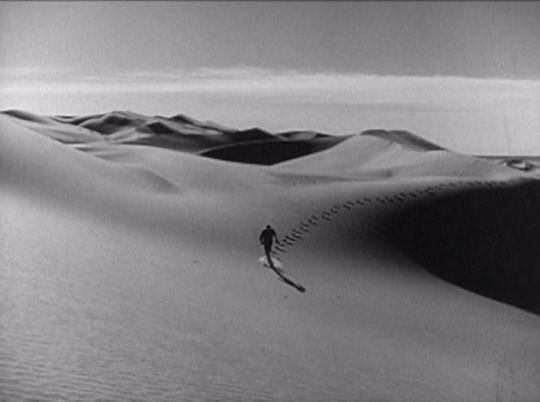
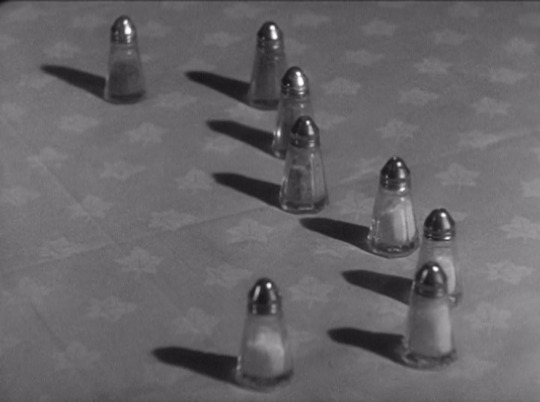
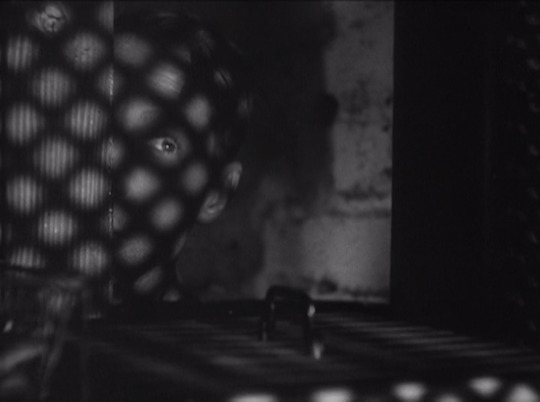
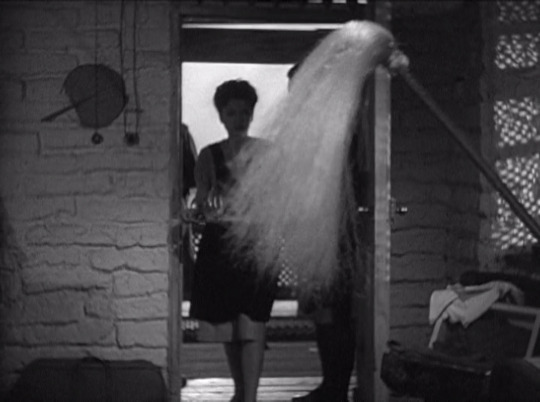

Five Graves to Cairo (1943) Dir. Billy Wilder, Cin. John F. Seitz
“You get a little crazy if you think about something all the time, for a long, long time.”
#five graves to cairo#cinematography#Billy Wilder#john f seitz#franchot tone#anne baxter#akim tamiroff#erich von stroheim#peter van eyck#1940s#1940s movies#movies#movie frames#film still#movies i watched in 2022#four frames at a time#Black and White
11 notes
·
View notes
Text
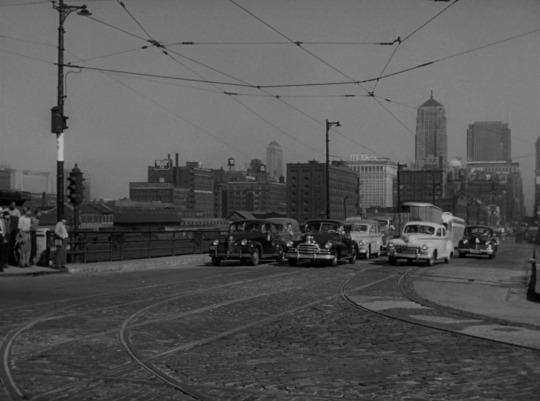
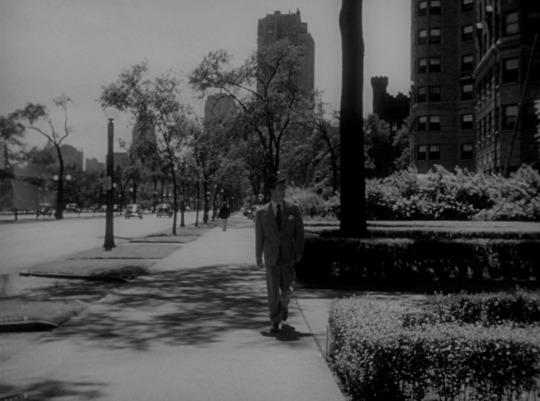

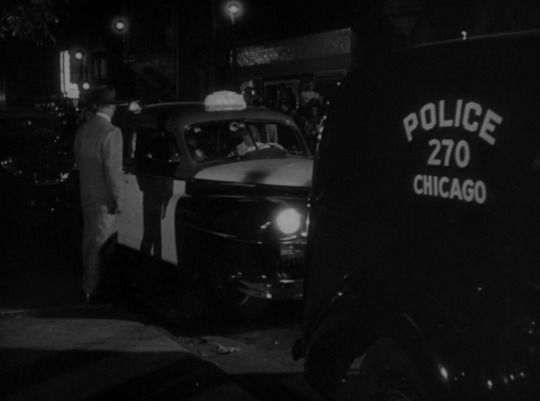

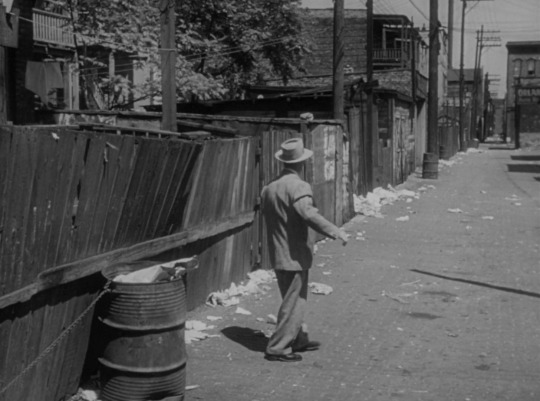
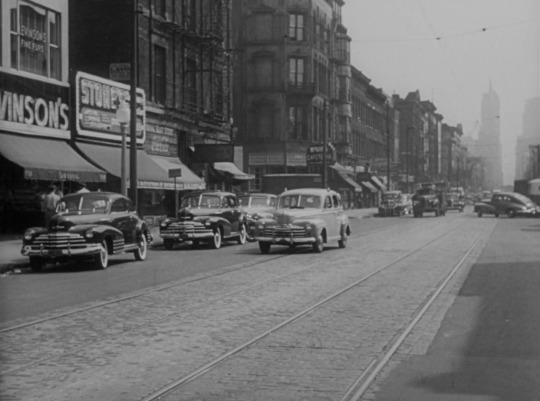



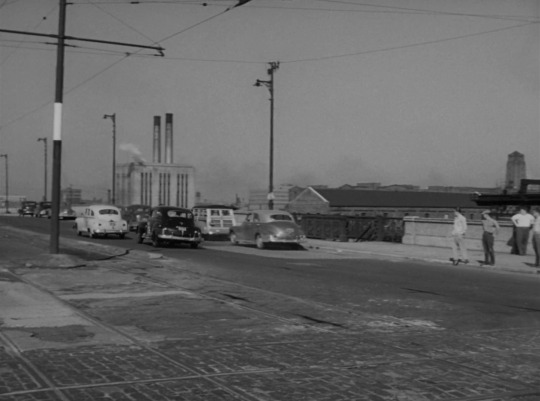
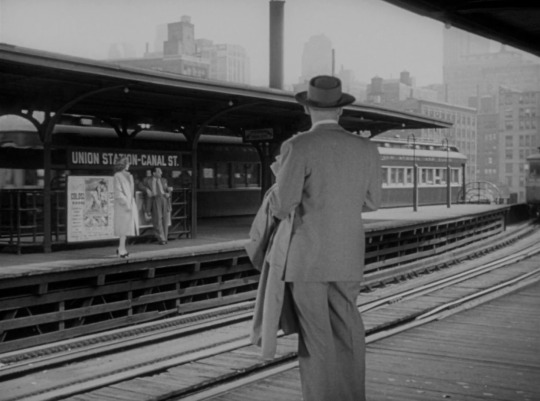
Chicago Deadline (Lewis Allen, 1949).
11 notes
·
View notes
Text
'Double Indemnity' – Barbara Stanwyck, femme fatale on Criterion Channel
‘Double Indemnity’ – Barbara Stanwyck, femme fatale on Criterion Channel
A masterpiece of film noir double dealing, Double Indemnity (1944) codified the moral depravity and sexual charge of the nascent genre at its most cynical.
Barbara Stanwyck is perfectly heartless as Phyllis Dietrichson, the icy adulteress who plants the seeds of murder in the mind of conniving insurance agent Walter Neff (Fred MacMurray). He plots the cold-blooded murder of her rich husband,…

View On WordPress
#1944#Barbara Stanwyck#Billy Wilder#Blu-ray#Criterion Channel#Double Indemnity#DVD#Edward G. Robinson#Fred MacMurray#James M. Cain#John F. Seitz#Miklos Rosza#Raymond Chandler#VOD
0 notes
Text
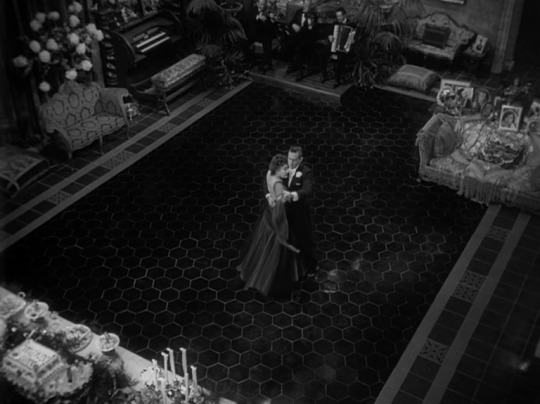


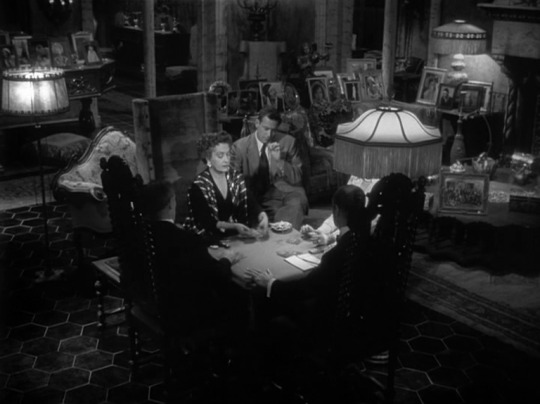
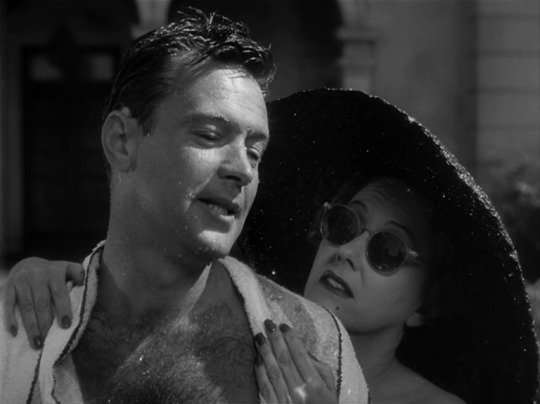



Sunset Boulevard (1950)
Director: Billy Wilder
Cinematographer: John F. Seitz
#classicfilmblr#classicfilmsource#oldhollywoodedit#sunset boulevard#billy wilder#norma desmond#gloria swanson#classic movies#classic hollywood#old hollywood#classic movie stars
85 notes
·
View notes
Text

Barbara Stanwyck and Fred MacMurray in Double Indemnity (Billy Wilder, 1944)
Cast: Fred MacMurray, Barbara Stanwyck, Edward G. Robinson, Porter Hall, Jean Heather, Tom Powers, Byron Barr, Richard Gaines, Fortunio Bonanova, John Philliber. Screenplay: Billy Wilder, Raymond Chandler, based on a novel by James M. Cain. Cinematography: John F. Seitz. Production design: David S. Hall. Music: Miklós Rózsa.
Oscar-bashing is an easy game to play, but sometimes it's a necessary one. Double Indemnity was nominated for seven Academy Awards: best picture, best director (Billy Wilder), best actress (Barbara Stanwyck), best screenplay (Wilder and Raymond Chandler), best black-and-white cinematography (John F. Seitz), best scoring (Miklós Rózsa), and best sound recording. It won none of them. The most egregious losses were to the sugary Going My Way, which was named best picture; Leo McCarey won for direction, and Frank Butler and Frank Cavett won for a screenplay that seems impossibly pious and sentimental today. Almost no one watches Going My Way today, whereas Double Indemnity is on a lot of people's lists of favorite films. The reason often cited for Double Indemnity's losses is that it was produced by Paramount, which also produced Going My Way, and that the studio instructed its employees to vote for the latter film. But the Academy always felt uncomfortable with film noir, of which Double Indemnity, a film deeply cynical about human nature, is a prime example. Wilder and Chandler completely reworked James M. Cain's story in their screenplay, and while they were hardly cheerful co-workers (Wilder claimed that he based the alcoholic writer in his 1945 film The Lost Weekend on Chandler), the result was a fine blend of Wilder's bitter wit and Chandler's insight into the twisted nature of the protagonists, Phyllis Dietrichson (Stanwyck) and Walter Neff (Fred MacMurray). And as long as we're on the subject of Oscars, there are the glaring absences of MacMurray and Edward G. Robinson from the nominations -- and not only for this year: Neither actor was ever nominated by the Academy. MacMurray's departure from his usual good-guy roles to play the sleazy, murderous Neff should have been the kind of career about-face the Academy often applauds. And Robinson's dogged, dyspeptic insurance investigator, Barton Keyes, is one of the great character performances in a career notable for them. (The supporting actor Oscar that he should have won went to Barry Fitzgerald's twinkly priest in Going My Way, a part for which Fitzgerald had been, owing to a glitch in the Academy's rules, nominated in both leading and supporting actor categories.)
6 notes
·
View notes
Text
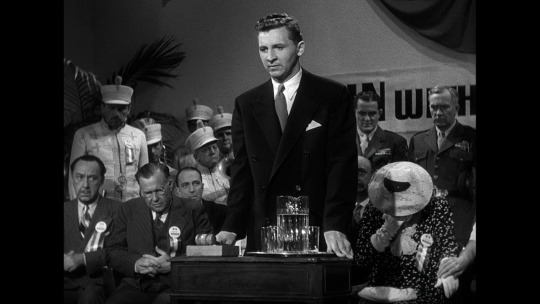
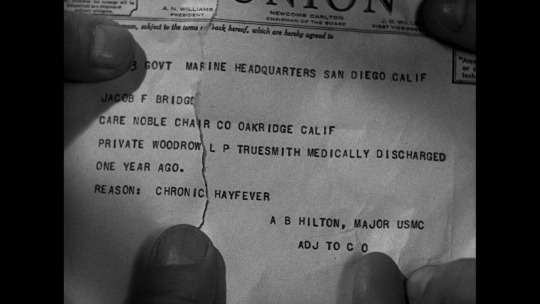

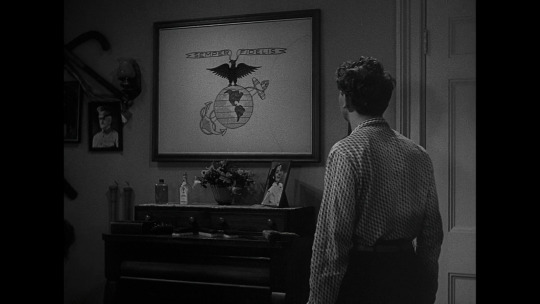
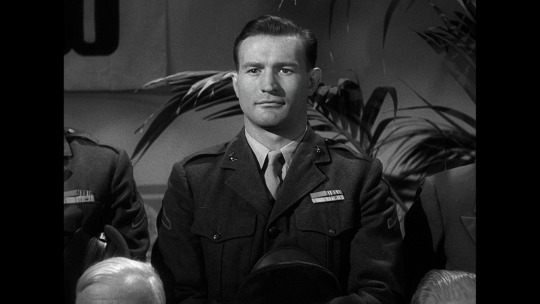


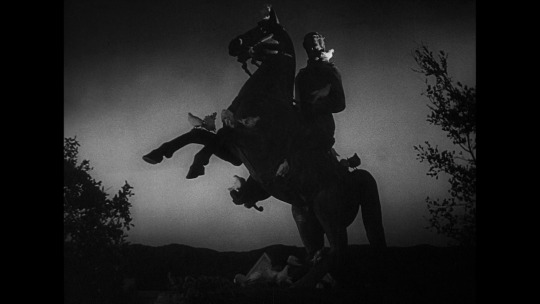


"This is the last act. The farce is over. The lying is finished, and the coward is at least cured of his fear."
Hail the Conquering Hero, 1944.
Dir. & Writ. Preston Sturges | DOP John F. Seitz
1 note
·
View note
Text
ALMANACCO DEL FESTIVAL DI MONTECARLO – 4° EDIZIONE 1977
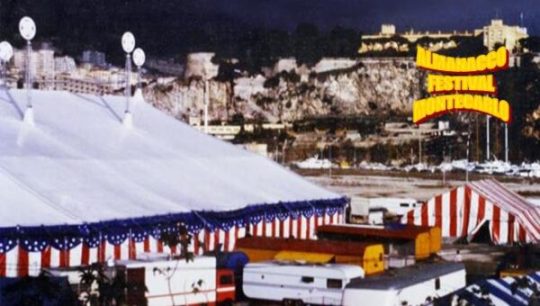
ALMANACCO DEL FESTIVAL DI MONTECARLO – 4° EDIZIONE 1977

8-12 dicembre 1977
GIURIA
- Principe Ranieri III di Monaco, Presidente
- John Ringling North
- Raf Vallone
- Cary Grant
- Horst Buchholz
- Jacqueline Cartier
PALMARES DEL FESTIVAL
CLOWN D’ORO
FAMIGLIA KNIE - LA GRANDE CAVALLERIA
CLOWN D’ARGENTO
LES ANTARES - ACROBATI SULL'AEREO
I CANESTRELLI - TRAMPOLINO ELASTICO
I CARILLO BROTHERS - FILO ALTO
I KRISTOF - MANO A MANO ALLA BASCULA
I SILAGIS - BASCULE
Nonostante l’amarezza per il mancato triplo salto mortale di Ketty Jarz (prima donna ad aver eseguito questa prodezza), sarà ricordato come un Festival importante, con una nutrita partecipazione italiana e la meritata vittoria del Clown d’Oro dalla famiglia Knie presente con tanti grandi numeri (cavalli, tigri, elefanti, tigri sugli elefanti). Nutrita la partecipazione italiana che vede sul podio i Canestrelli in una rara reentrée dagli Usa da dove ormai risiedono da 20 anni. Apprezzamenti anche per i Forgione-Macaggi. In giuria le star del cinema Cary Grant e Raf Vallone impreziosiscono l’evento con un tocco di mondanità. La Giuria premia con un riconoscimento alla carriera l’iconico clown americano Lou Jacobs, il cui volto è l’emblema del circo sui manifesti di tutto il mondo. La famiglia di Ferdinando Togni è saldamente in capo alla parte tecnica, logistica e direzione di pista e presente con i nuovi chapiteau bianchi. Tra i grandi nomi sul podio, Istvan Kristof e sua moglie con i numeri di pertiche e bascula a due. Si tiene la seconda riunione dell’Associazione dei Direttori di circo di tutto il mondo. Siamo negli anni d’Oro del Festival!
ELENCO PARTECIPANTI
1977
Sergio
Mr Loyal
Forgione-Macaggi
Charivari - clowns
Barry Lubin
Clown
Tinsman Jim
Clown
Luis Munoz
Filo teso
Donnert
Lilla, Elefante barbiere
Segregas (La troupe)
Equilibrio sui rulli
Herman's (La troupe)
Pertiche
Freddy Quinn
Cantante sul Filo alto
Seitz Jo
Filo alto
Fredy Knie Sr
Cavalleria - Alta scuola
Louis Knie
Tigri ed Elefanti
Buby e Jule
Clowns
Miss Dawne
Pappagalli
Bremlov
Giocoliere
Germaine, Louis e Franco Knie
Elefanti
Reumatics (La troupe)
Acrobati
Macaggi
Saltatori
Rhodin Jack
Scimpanzé
Antares (La troupe)
Acrobati sull'aereo
Rodriguez Tino
Trapezio - Corda aerea
Lou Jacobs
Clown
Canestrelli (La troupe)
Trampolino elastico
Carrillo Brothers
Filo alto
Otto (La troupe)
Charivari - Bascule
Li Suang
Corda elastica cinese
Clive
Otarie
Gérard Edon
Trapezio washington
Banda Vidane
Elefanti del Circo Americano (Togni)
Istvan (La troupe)
Pertiche
Ketty ed Emilio Jarz
Trapezio volante
Lee Pee Ville
Grandi illusioni
Silagis
Saltatori
Waldemar
Volteggio a cavallo
Duo Carrington
Barboncini
Arild Arnardo
Acrobata comico alla corda
Duo Kristof
Mano a mano alla bascula
Barry Lubin e Tinsman Jim
Clowns
Marcel Peters
Belve feroci
Dolly Jacobs
Anelli
Segreras (La troupe)
Trapezio volante

FAMIGLIA KNIE

LES ANTARES

I CANESTRELLI

CARRILLO BROTHERS

IL DUO KRISTOF CLOWN D'ARGENTO

SILAGIS

CLOWN LOU JACOBS
FREDDY KNIE SR.

MARCEL PETERS

LOUIS KNIE TIGRI & ELEFANTI

I SILAGIS
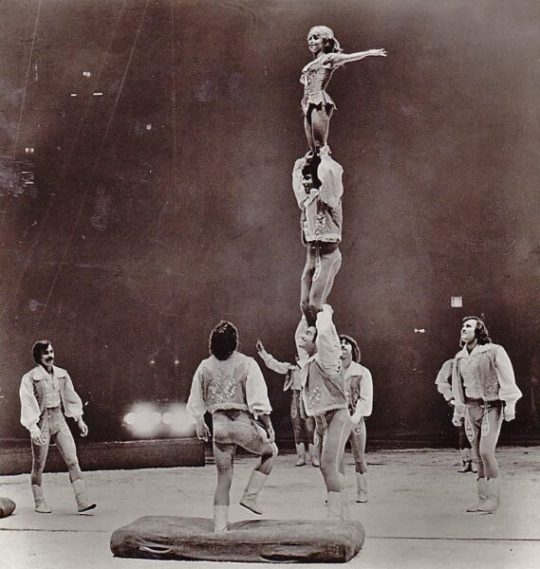
FRANCO & LOUIS KNIE

FAMIGLIA KNIE
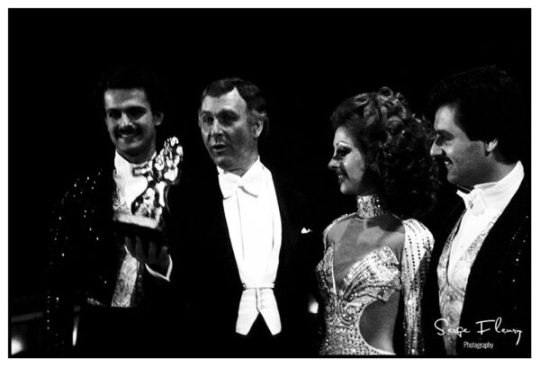


KETTY JARZ GIRA UN DOPPIO E MEZZO

ARILD ARNARDO
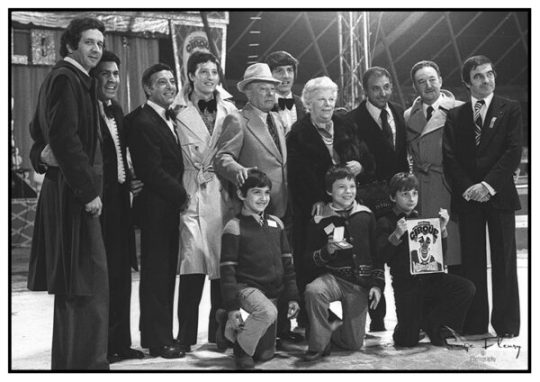
LA FAMIGLIA TOGNI


Gerard Edon

Le tigri di Louis Knie

Luis Munoz
Credit della IV edizione del Festival:
- Alain Frere, consigliere tecnico addetto alle relazioni con gli artisti
- Irvin e Kenneth Feld, consiglieri artistici
- Enis Togni, direttore delle installazioni tecniche e della regia di pista
- Edoardo Murillo, assistente
- Billy F. Arata, consulenza artistica
- Franco Medini, consulenza artistica
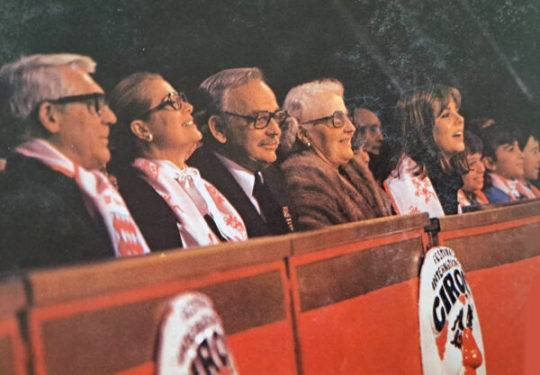
Credit photo Serge Fleury e Archivio Circusfans
Credit video archivio Maurizio Colombo
ALMANACCO DEL FESTIVAL DI MONTECARLO – 4° edizione (1977)
Se questo articolo ti è piaciuto condividilo sui tuoi social utilizzando i bottoni che trovi qui sotto
Read the full article
#almanaccodelfestivaldimontecarlo#antares#arildarnardo#bandavidane#carillo#circo#circus#cirkusz#cirque#cyrk#dollyjacobs#duokristoff#festivaldimontecarlo#forgione#francokniesenior#freddyquinn#fredykniesenior#germainetheron#istvankristof#kettyjarz#loujacobs#louiskniesenior#marcelpeters#troupewaldemar
0 notes
Text
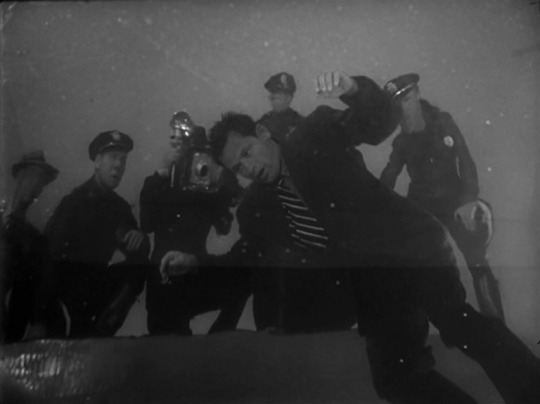
Sunset Blvd.
Directed by Billy Wilder
Photographed by John F. Seitz
0 notes
Text
Five Graves to Cairo
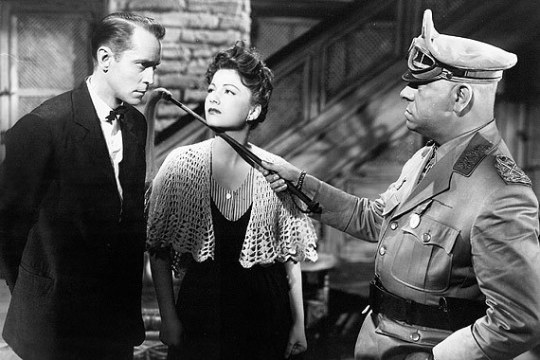
After the madcap comedy of THE MAJOR AND THE MINOR (1942), Billy Wilder and his co-writer, Charles Brackett, took a sharp turn into wartime suspense with FIVE GRAVES TO CAIRO (1943). Franchot Tone is a British tank soldier trapped behind enemy lines in Egypt who takes on the identity of a dead waiter only to discover the man was a German spy. His boss, who arrives at the hotel where he’s hiding, is none other than Field Marshall Rommel, played to the hilt by Erich von Stroheim. Tone is quite good in his role, as are Akim Tamiroff as the Egyptian hotel-keeper and Peter Van Eyck as Rommell’s adjutant. But all their hard work takes a back seat to von Stroheim’s magnetic, nuanced performance. Wilder gives him a star entrance. He’s shot from behind as he dictates a telegram to the German high command, his thick neck dominating the screen, and only turns to show his face as he says his name. The film is atmospherically shot by John F. Seitz — who would go on work with Wilder on DOUBLE INDEMNITY (1944), THE LOST WEEKEND (1945) and SUNSET BOULEVARD (1950) — and scored by Miklos Rosza. There are some narrative burps. It’s amazingly convenient that the Germans never speak to Tone in German, even though he’s supposed to be one of them. But the suspense is palpable. Anne Baxter is beautiful as the French maid, Mouche, and has some lovely moments, but she’s awfully clean for a maid working in the middle of the desert. No sand sticks to that face. Her French accent is pretty inconsistent, and she keeps talking about the German “twoops,” as if she were doing a bad Marlene Dietrich imitation.
1 note
·
View note
Photo
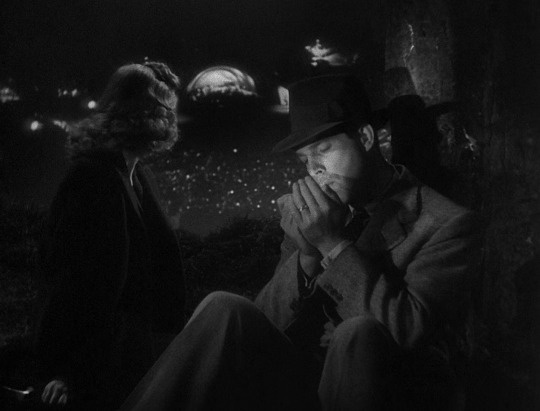
Double Indemnity (1944)
“Yes, I killed him. I killed him for money - and a woman - and I didn't get the money and I didn't get the woman. Pretty, isn't it?”
Director: Billy Wilder
Cinematographer: John F. Seitz
3 notes
·
View notes
Photo


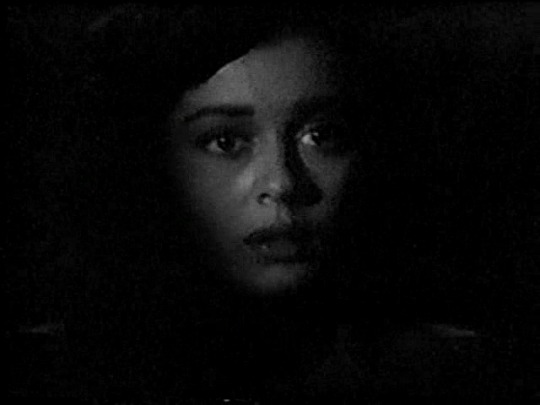
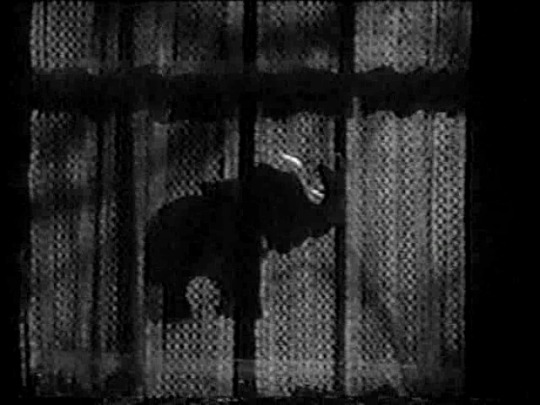
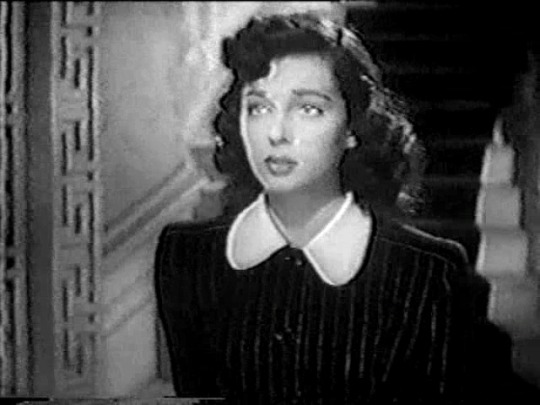
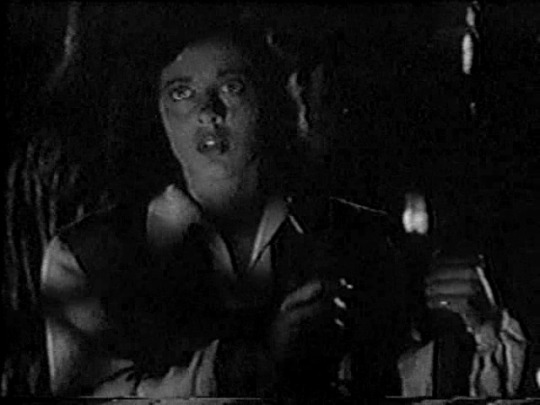
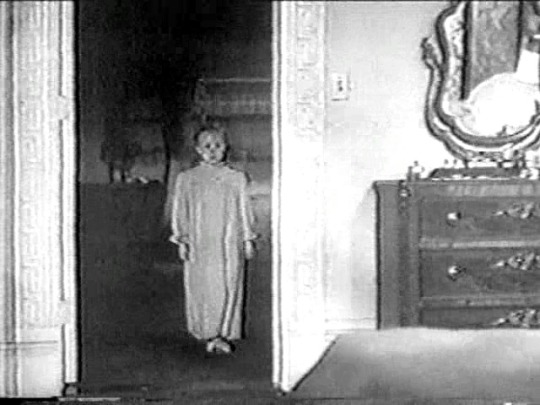
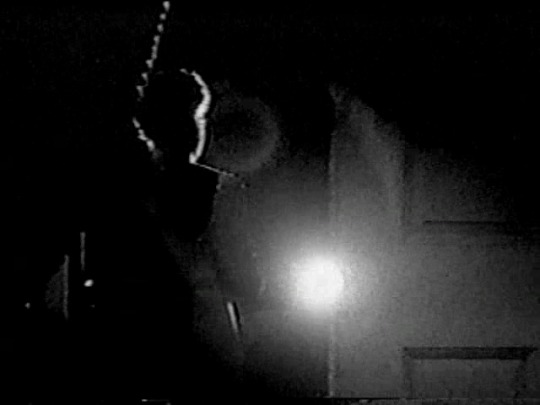
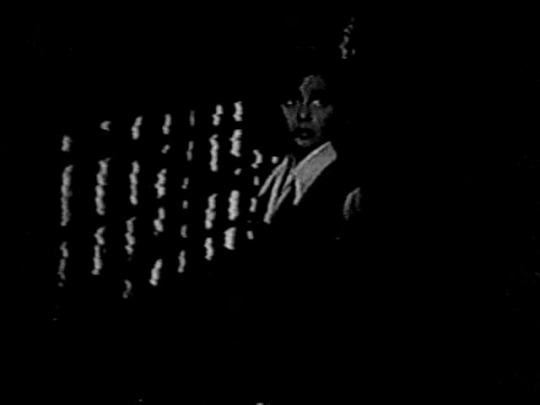
the unseen (us, allen 45)
7 notes
·
View notes
Text

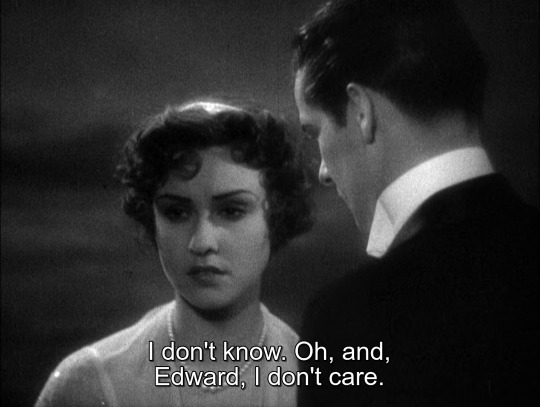
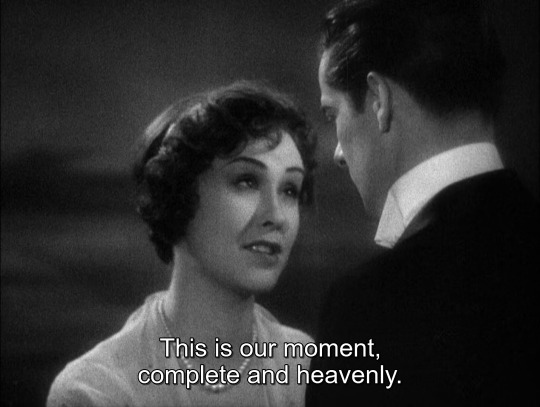

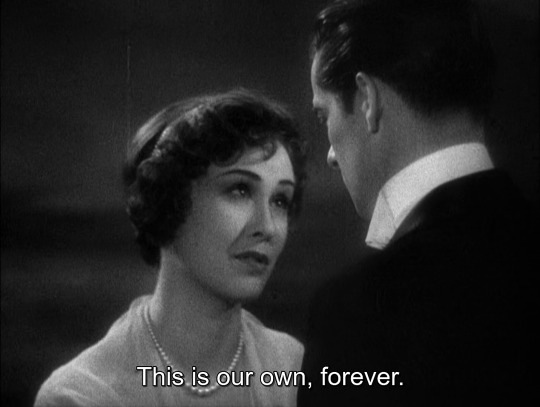
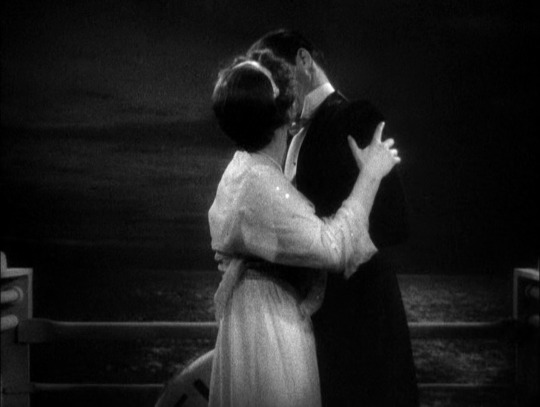

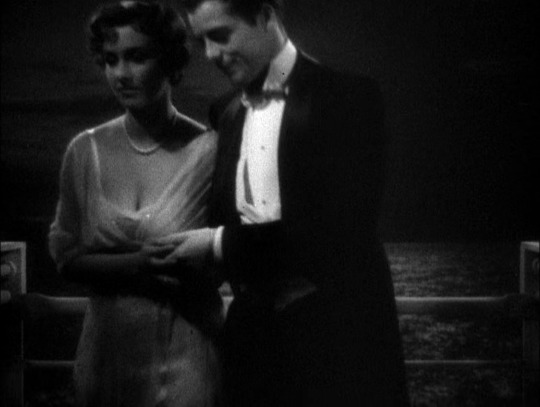


Cavalcade (Frank Lloyd, 1933).
#cavalcade#cavalcade (1933)#frank lloyd#john f. seitz#Margaret Clancey#William S. Darling#Earl Luick
19 notes
·
View notes
Photo


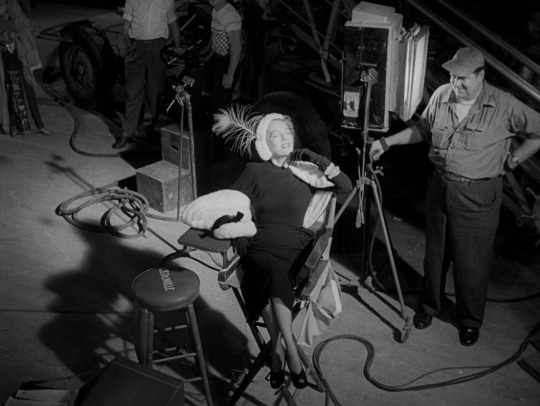


Sunset Blvd. (1950) Dir. Billy Wilder, Cin. John F. Seitz
“You’re norma desmond. Used to be in silent pictures. Used to be big.’
‘I am big, it’s the pictures that got small.”
#sunset blvd#billy wilder#cinematography#gloria swanson#william holden#erich von stroheim#nancy olson#cecil b. demille#john f. seitz#movies#movie frames#film still#four frames at a time#1950s#1950s movies#movies i watched in 2019
29 notes
·
View notes
Photo
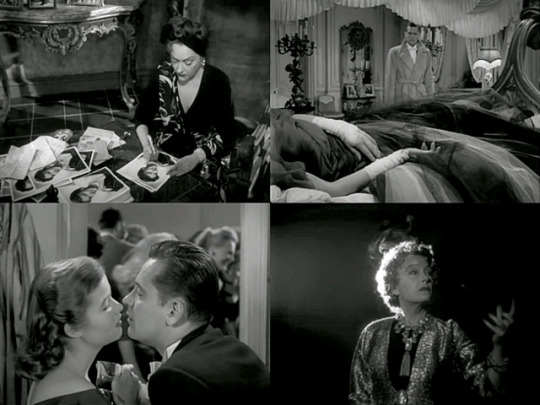


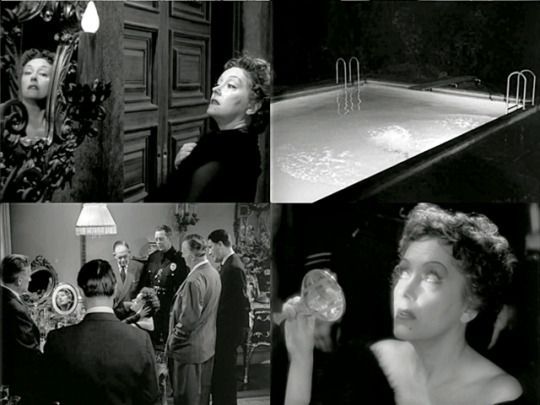
The stars are ageless, aren't they?
Sunset Boulevard (1950) dir. Billy Wilder, D.O.P. John F. Seitz
#sunset boulevard#billy wilder#john f seitz#...i realized that this quote is used a lot :) but well. it is a really good one! right after--you know what
2 notes
·
View notes
Text
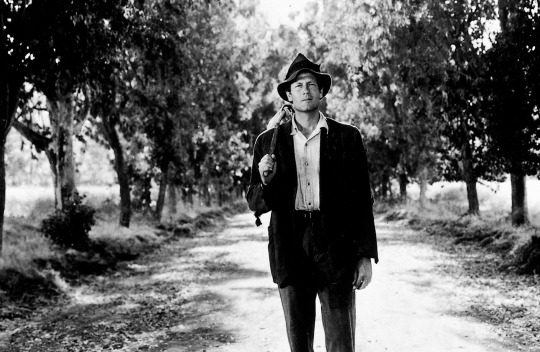
Joel McCrea in Sullivan's Travels (Preston Sturges, 1941)
Cast: Joel McCrea, Veronica Lake, Robert Warwick, William Demarest, Franklin Pangborn, Porter Hall, Byron Foulger, Margaret Hayes, Robert Greig, Eric Blore. Screenplay: Preston Sturges. Cinematography: John F. Seitz. Art direction: Hans Dreier, A. Earl Hedrick. Film editing: Stuart Gilmore. Music: Charles Bradshaw, Leo Shuken.
Let us now praise Joel McCrea, who never became an icon like Cooper or Gable or Grant or Stewart, but could always be relied on for a fine performance when the others weren't available. He starred in two of Sturges's best, the other one being The Palm Beach Story (1942), and gave solid and sometimes memorable performances for William Wyler (Dead End, 1937), Cecil B. DeMille (Union Pacific, 1939), Alfred Hitchcock (Foreign Correspondent, 1940), and George Stevens (The More the Merrier, 1943) before becoming a durable fixture in Westerns. His performance in the title role of Sullivan's Travels is just what the movie needed: an actor who could do slapstick comedy but turn serious when necessary, a task that among major stars of the era perhaps only Cary Grant and Henry Fonda -- the Fonda of Sturges's own The Lady Eve (1941) -- were also really good at. The genius of Sullivan's Travels is that its serious parts jibe so well with its goofy ones. As Sturges has characters warn Sullivan at the beginning of his scheme to pose as a hobo to get material for his turn as a "serious" director: Poor people don't like to be condescended to. The pivotal scene of the film is the one in which the convicts go to a Black church to watch a movie. It could have been an embarrassing display of the era's racial stereotypes, but Sturges handles it with tact and sensitivity, so that it becomes emotionally effective and brings home the dual points about charity and the need for humor without excessive sentimentality and preachiness. Sturges's usual gang of brilliant character players -- including William Demarest, Franklin Pangborn, Porter Hall, Eric Blore, and Jimmy Conlin -- are on hand. Sturges and McCrea are said to have found working with Veronica Lake a pain, but fortunately it doesn't show.
4 notes
·
View notes
Text

Double Indemnity (1944)
Dir. Billy Wilder
#double indemnity#1944#1940s#1940s movies#40s#film noir#cinema noir#noir cinema#black and white cinema#black and white film#james m. cain#john f. seitz#miklós ròzsa#barbara stanwyck#fred macmurray#film quote
37 notes
·
View notes